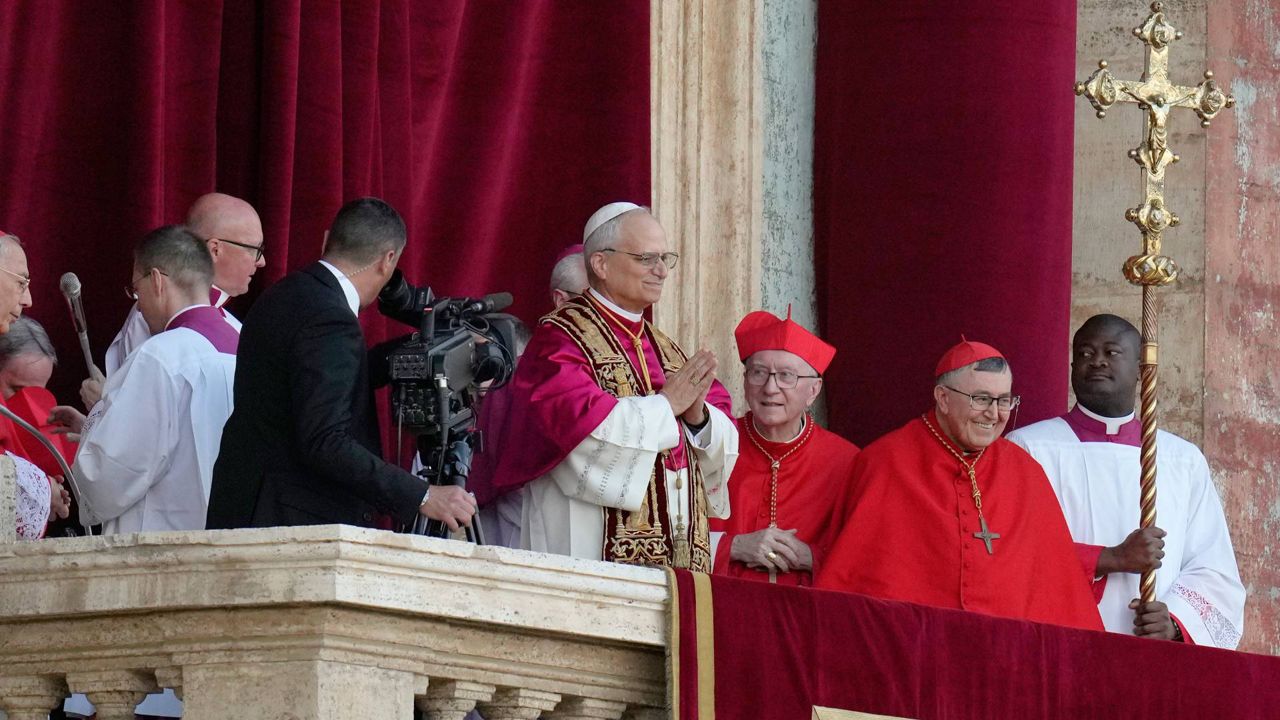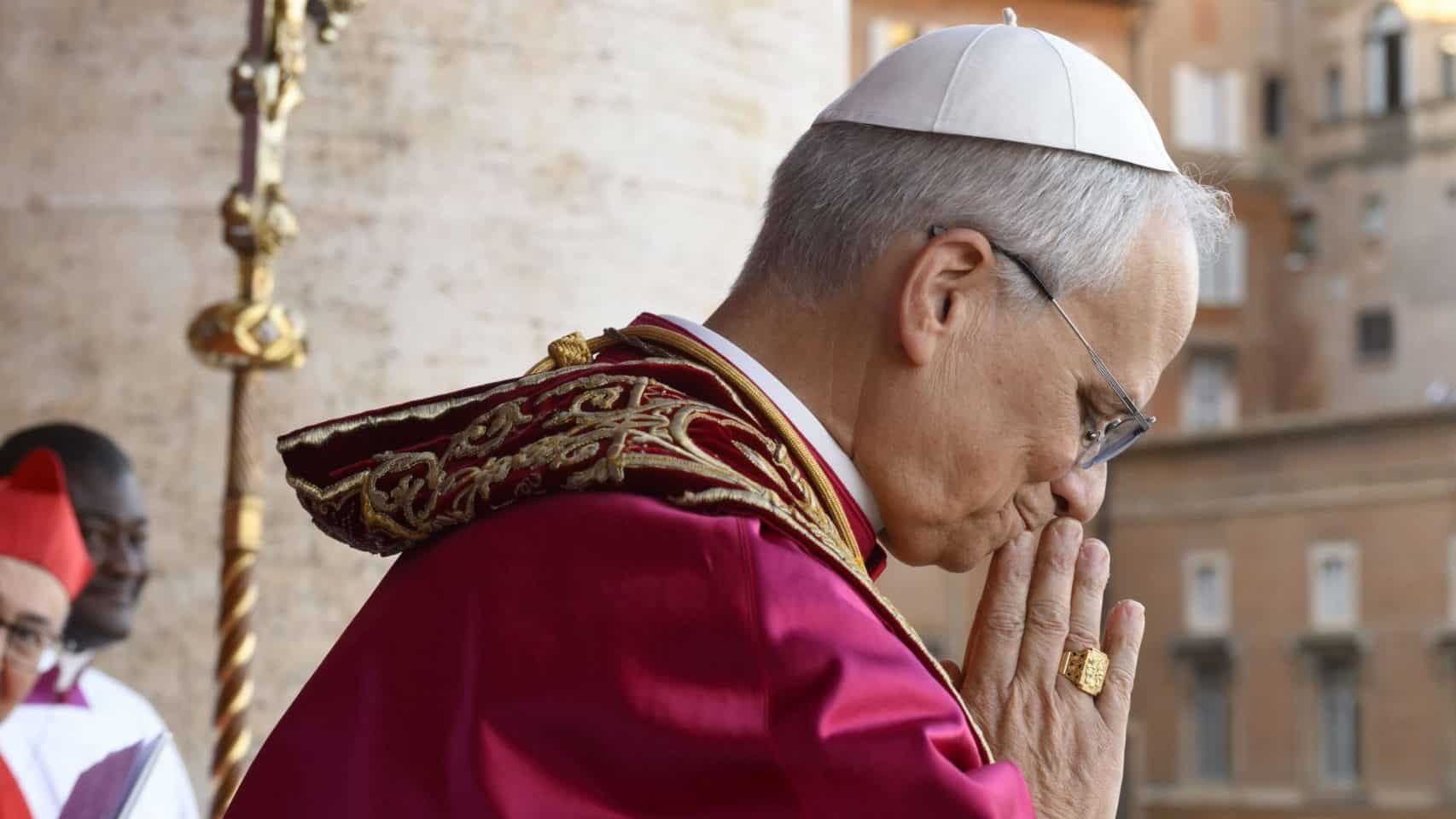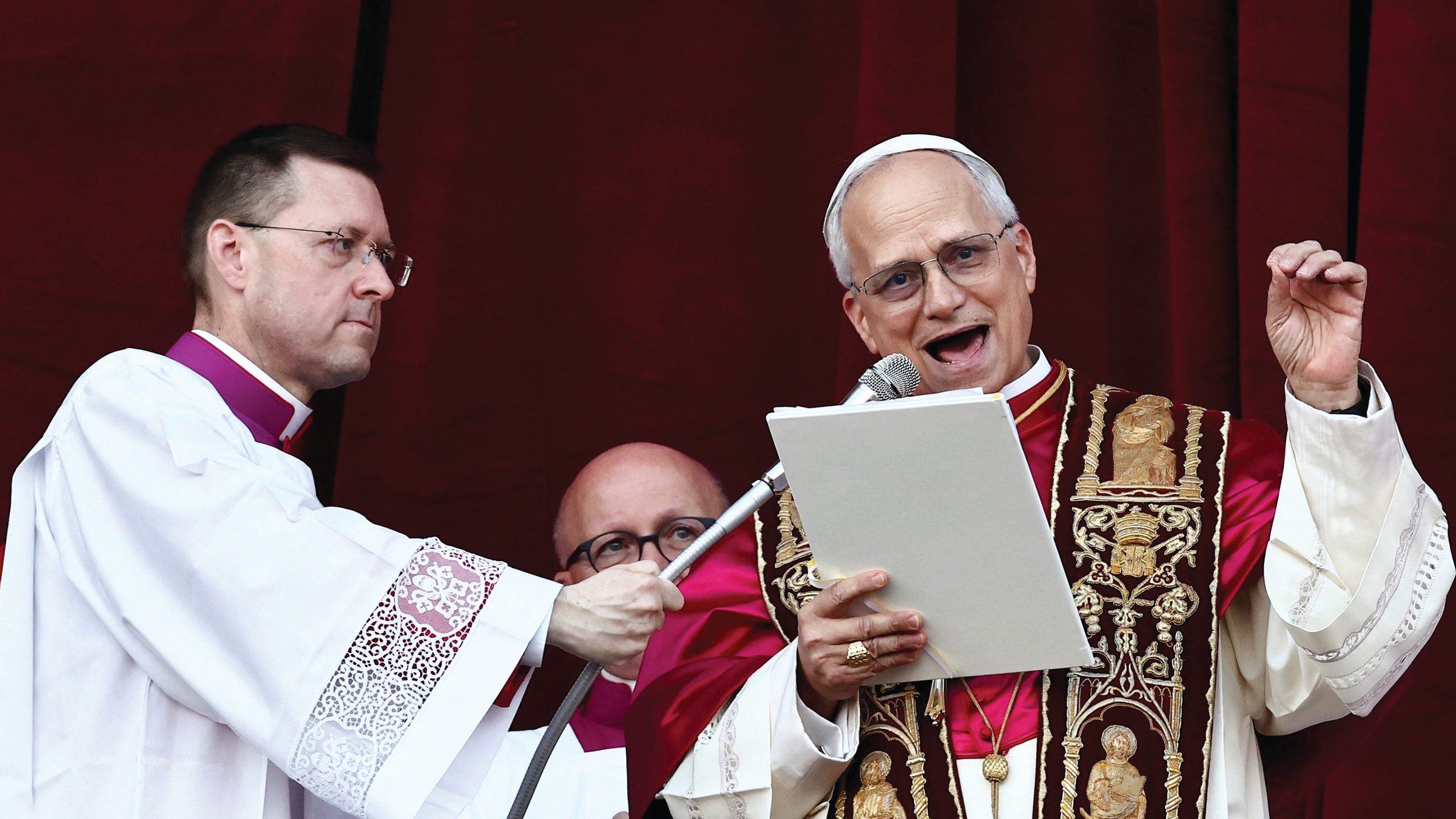VATICAN CITY — In a historic moment for the Roman Catholic Church, American Cardinal Robert Francis Prevost was elected the 267th pope on Thursday, May 8, 2025, becoming the first U.S.-born pontiff in the Church’s 2,000-year history.
Taking the name Pope Leo XIV, the 69-year-old Chicago native emerged from the conclave’s second day to greet thousands of faithful in St. Peter’s Square, delivering a message of peace and unity. His election, announced with white smoke billowing from the Sistine Chapel chimney, marks a seismic shift in the papacy, breaking a long-standing taboo against an American pope due to the United States’ global geopolitical influence.

A Humble Greeting from the Balcony
At approximately 6:10 p.m. local time, cheers erupted as Cardinal Dominique Mamberti, the senior cardinal deacon, stepped onto the balcony of St. Peter’s Basilica and proclaimed, “Habemus Papam” — “We have a Pope.” Moments later, Pope Leo XIV appeared, clad in the traditional white cassock and red cape, a sartorial choice that contrasted with his predecessor Pope Francis’ simpler attire in 2013.
Speaking in fluent Italian, he began, “Peace be with you all,” echoing the words of the resurrected Christ. He continued, “I would like this greeting of peace to enter your hearts, to reach your families, and all people, wherever they are.” Switching briefly to Spanish, he acknowledged his deep ties to Peru, where he spent much of his ministerial life, saying, “I particularly want to say hello to my compatriots from Peru.”
The crowd, estimated at over 40,000, roared with approval, waving flags from Mexico, Peru, the United States, and beyond. “Viva il papa!” they chanted, as a Carabinieri military band played in the background. For many, the moment was electric. Jessica Wood, a New Yorker visiting Rome, told reporters, “To be here for this moment is so unbelievably profound. It’s something I’m going to be talking about for the rest of my life.”
Born in Chicago in 1955, Robert Francis Prevost grew up in a city known for its vibrant Catholic community. He earned a bachelor’s degree in mathematics from Villanova University, a Catholic institution in Pennsylvania, before pursuing theological studies at the Catholic Theological Union in Chicago.
His academic journey took him to Rome, where he studied canon law at the Pontifical University of St. Thomas Aquinas, earning a doctorate. Ordained a priest in 1982 for the Order of St. Augustine, Prevost’s early career was shaped by his commitment to the Augustinian values of community and service, encapsulated in their motto: “to live together in harmony, being of one mind and one heart on the way to God.”
Prevost’s life took a transformative turn in 1985 when he was sent to Peru as a missionary. Over the next two decades, he served in some of the country’s poorest regions, including Chulucanas and Trujillo, working as a teacher, parish priest, and missionary.
His deep connection to Peru culminated in his naturalisation as a Peruvian citizen in 2015, a rare move for a cleric that underscored his integration into Latin American culture.
In 2014, Pope Francis appointed him bishop of Chiclayo, Peru, and later apostolic administrator of Callao. His tenure in Chiclayo earned him a reputation as a joyful, approachable leader. Rev. Fidel Purisaca Vigil, a priest in Chiclayo, recalled, “No matter how many problems he has, he maintains good humor and joy.”
Rising Through the Vatican Ranks
Pope Francis, who died on April 21, 2025, at age 88, clearly saw Prevost as a trusted ally. In 2023, Francis brought him to Rome to serve as prefect of the Dicastery for Bishops, a powerful Vatican office responsible for vetting and recommending bishop nominations worldwide.
Prevost also led the Pontifical Commission for Latin America, strengthening ties with the region that houses nearly 40% of the world’s Catholics. In early 2025, Francis elevated him to the highest rank of cardinal, a move widely interpreted as a sign of papal favour.
Prevost’s Vatican tenure was marked by significant reforms. He oversaw a landmark change under Francis, allowing three women to join the voting bloc that recommends bishop candidates, a progressive step toward gender inclusion in Church governance. His global experience and administrative acumen made him a standout among the 133 cardinal electors, despite initial scepticism about his American nationality.
Pope Leo XIV’s election, achieved on the fourth ballot, suggests a desire among cardinals to continue Francis’ legacy of reform while bridging divides within the Church.
Prevost is seen as a centrist, aligning with Francis on issues like environmental stewardship, outreach to the poor, and support for migrants. He has endorsed Francis’ stance on allowing divorced and remarried Catholics to receive Communion but offered only mild support for blessings of same-sex couples, indicating a cautious approach to controversial social issues.
His choice of the name Leo XIV is laden with symbolism. The name, derived from the Latin for “lion,” evokes strength and courage. The first Pope Leo, known as Leo the Great (440–461), is celebrated for persuading Attila the Hun to spare Rome.
The most recent Leo, Pope Leo XIII (1878–1903), was a champion of Catholic social justice, laying the groundwork for the Church’s modern teachings on labour and human dignity. By choosing Leo, Prevost signals an intent to lead with fortitude during a time of global crises, from conflicts in Ukraine and the Middle East to the Church’s internal challenges, including polarisation and the legacy of sexual abuse scandals.
Overcoming Controversy
Prevost’s path to the papacy was not without hurdles. Allegations surfaced that he mishandled sexual abuse cases involving priests in Chicago and Peru. In Chicago, during his time leading the Augustinian Province, a priest found guilty of abuse was allowed to reside near a Catholic school, though the Vatican denied that Prevost authorised this. These issues did not derail his candidacy, likely due to his global credentials and the cardinals’ focus on his broader contributions.
As Pope Leo XIV begins his papacy, he inherits a Church navigating a complex landscape. The Catholic population is declining in the West but growing in the Global South, particularly in Africa and Latin America.
He faces the challenge of maintaining unity amid theological and cultural divides, with some cardinals advocating for a return to traditionalism and others pushing for further progressive reforms. His experience in Peru and his role in bishop appointments equip him to address these tensions, but his American background may draw scrutiny from those wary of U.S. influence.
In his first address, Leo XIV emphasised dialogue and missionary zeal, saying, “We can be a missionary church, a church that builds bridges, that is always open to receive everyone.” He paid homage to Francis, recalling his predecessor’s Easter blessing and urging the faithful to “go forward without fear, united hand in hand with God.”
The election sparked jubilation in the United States. President Donald Trump posted on Truth Social, “Congratulations to Cardinal Robert Francis Prevost, who was just named Pope. It is such an honor to realize that he is the first American Pope.” Former President Joe Biden, a devout Catholic, wrote on X, “Habemus papam — May God bless Pope Leo XIV of Illinois.” In Peru, Catholics expressed pride, with many in Chiclayo celebrating their former bishop’s ascent.
Pope Leo XIV’s immediate schedule includes a Mass with cardinals in the Sistine Chapel on Friday and the Regina Coeli prayer from St. Peter’s balcony on Sunday. His papacy, rooted in a blend of American pragmatism and Latin American pastoral care, promises to chart a new course for the Catholic Church at a pivotal moment in history.
As the Empire State Building glowed gold and white in his honour, the world watched a new era dawn in Rome, led by a Chicagoan called to serve as the Vicar of Christ.
















